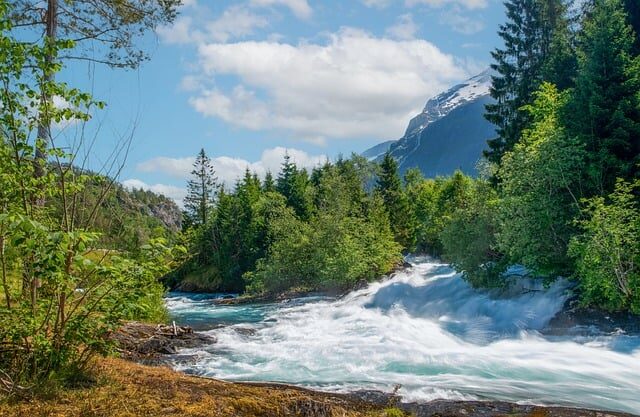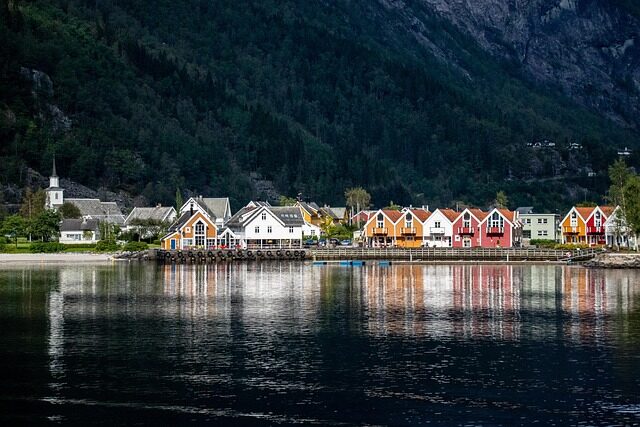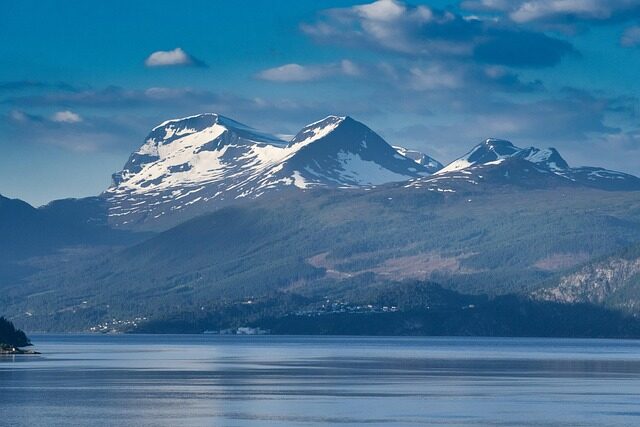Scandinavia’s rich history is woven into the fabric of global heritage, with a tapestry of tales that span from ancient times through the transformative Viking Age and into the complex medieval period. This region, comprising Denmark, Norway, and Sweden, has archaeology that speaks volumes through its artifacts and burial sites, hinting at the lives of those who once roamed these northern lands.
The Viking Age, starting with the infamous Lindisfarne raid, was a time of exploration, conquest, and cultural exchange. It was a period that indelibly shaped Scandinavian society, pushing its boundaries far beyond mere geographic confines.
- History of Scandinavia
- The Viking Age: What was the impact of the Viking Age on Scandinavian society?
- The birth of a new age: How did the Middle Ages shape Scandinavia?
- Medieval Scandinavia: What are the key features of Medieval Scandinavian architecture?
- Medieval Scandinavia: How did power dynamics evolve during the Viking Age?
- Settlements outside Scandinavia: Where did the Vikings settle outside their homeland?
- Genetic origins of Scandinavians: What is the genetic legacy of the Viking Age?
- How did the Vikings die out: What factors contributed to the decline of Viking societies?
- History of Scandinavia
- The Viking Age: What was the impact of the Viking Age on Scandinavian society?
- The birth of a new age: How did the Middle Ages shape Scandinavia?
- Medieval Scandinavia: What are the key features of Medieval Scandinavian architecture?
- Medieval Scandinavia: How did power dynamics evolve during the Viking Age?
- Settlements outside Scandinavia: Where did the Vikings settle outside their homeland?
- Genetic origins of Scandinavians: What is the genetic legacy of the Viking Age?
- How did the Vikings die out: What factors contributed to the decline of Viking societies?
History of Scandinavia
The Scandinavian historical narrative is marked by the Stone, Bronze, and Iron Ages, with a particularly significant shift occurring during the Viking Age, roughly from 800 to 1050 CE. It was a time of dynamic change, where raiding, trading, and colonization by the Norse people left a lasting impact on Europe and beyond. The Vikings, as they are popularly known, embarked on their famed voyages from the shores of Denmark, Norway, and Sweden, leaving a legacy that would resonate throughout the ages.
These explorations were not solely for plunder; they were also about establishing new trade routes and settlements. The influence of the Viking Age continued into the medieval era, where the transition from paganism to Christianity brought about significant social and cultural transformations within Scandinavian societies. The communal cemeteries that emerged during this period are a testament to these changing burial traditions.
One can trace the lineage of Scandinavian societies through various artifacts, from intricate jewelry to the vestiges of Viking longships, each telling a story of the past that has shaped the present-day Nordic countries.
The Viking Age: What was the impact of the Viking Age on Scandinavian society?
During the Viking Age, Scandinavian society experienced an unprecedented wave of expansion. The Vikings left their mark on history not only through their fearsome raids but also through their adept seafaring and trading skills. The impact of this era on Scandinavian society was multifaceted, influencing everything from social structures to art and religion.
As the Vikings ventured out, they came into contact with various other cultures, integrating new ideas and practices into their own society. This period saw the introduction of new agricultural techniques, which led to an increase in wealth and a more stratified society. The importance of chieftains and kings grew, and their power was often displayed through lavish burials and monumental rune stones.

The Viking raids themselves also served a social function, as they were a means for young warriors to gain wealth and status. This societal dynamic helped to shape the political landscape of the region, eventually leading to the consolidation of the three kingdoms of Denmark, Norway, and Sweden.
The birth of a new age: How did the Middle Ages shape Scandinavia?
The Middle Ages were a transformative period for Scandinavia, characterized by the gradual transition from paganism to Christianity. This shift brought about profound changes in all aspects of life, from art and culture to governance and social organization.
Christianity introduced new norms and values, which were reflected in the art and architecture of the period. Churches and cathedrals began to dot the landscape, many featuring the Romanesque style with rounded arches and heavy stone construction. This religious shift also altered burial practices, moving from solitary graves to communal churchyards.
The medieval period also saw the rise of feudalism in Scandinavia, leading to a more hierarchical society with a clear distinction between the nobility and the peasantry. This era also witnessed the emergence of cities and the growth of trade, further altering the social fabric of Scandinavian societies.
Medieval Scandinavia: What are the key features of Medieval Scandinavian architecture?
Medieval Scandinavian architecture is a testament to the region’s cultural and religious evolution during the Middle Ages. The key features of this architectural style reflect a blend of local traditions and external influences, particularly from the Romanesque period.

- Stave churches: Unique to Norway, these wooden structures are characterized by their tall, narrow, and pointed rooftops, often adorned with intricate carvings depicting scenes from Norse mythology and Christian symbology.
- Stone churches: Influenced by Romanesque style, they exhibit rounded arches, thick walls, and large towers, serving as a symbol of the newfound Christian faith across Scandinavia.
- Castles and fortresses: Built primarily for defense, they are indicative of the region’s tumultuous political climate and the need for protection against external threats.
These architectural developments not only provided functional spaces for worship and defense but also stood as enduring symbols of the region’s growing economic wealth and social order.
Medieval Scandinavia: How did power dynamics evolve during the Viking Age?
Power dynamics within medieval Scandinavia underwent substantial shifts during the Viking Age. Initially, power was distributed among local chieftains who ruled over small territories. However, as Viking raids increased in frequency and scale, the need for coordinated defense and administration became apparent.
Rulers began to consolidate their power, leading to the emergence of the first Scandinavian monarchies. Kings like Harald Fairhair in Norway and Gorm the Old in Denmark are credited with unifying their respective lands. Sweden’s consolidation occurred slightly later, with significant figures such as Eric the Victorious and Olof Skötkonung.
This period also saw the development of laws and governance structures, which were often codified in assemblies known as things. As power centralized, these assemblies played a crucial role in legitimizing the authority of kings and maintaining social order within the ever-growing kingdoms.
Settlements outside Scandinavia: Where did the Vikings settle outside their homeland?
Vikings were renowned for their extensive explorations, which led to settlements far beyond their Scandinavian homeland. Their voyages took them to distant lands, where they established colonies and intermingled with local populations.

- The British Isles: Vikings established numerous settlements here, with significant influence in Scotland, Ireland, and England – the latter’s Danelaw region being a prime example.
- Iceland: Settled around 870 CE, it became a hub for Norse culture and later, the site of the famed Icelandic sagas.
- Greenland and Vinland: Greenland served as a stepping stone for Leif Erikson’s voyages to North America, where Vikings briefly settled in what they called Vinland, known today as Newfoundland.
- Rus’ and the Eastern Routes: Vikings, often called Varangians in this context, ventured into Eastern Europe, founding what would become the Kievan Rus’ and facilitating trade along the Volga and Dnieper rivers.
These settlements contributed to the widespread influence of Scandinavian culture and the integration of the Vikings into European history.
Genetic origins of Scandinavians: What is the genetic legacy of the Viking Age?
The Viking Age left a significant genetic imprint on the populations of Scandinavia and beyond. Recent genetic studies have shown that the Vikings were not a homogeneous group but rather a diverse set of populations from across the region. This diversity is still evident in the genetic makeup of modern Scandinavians.
The mixing of Norse settlers with the local populations in their colonies also left a genetic legacy that can be traced in the DNA of people living in the British Isles, Iceland, and other parts of Europe. Consequently, the genetic origins of Scandinavians are a tapestry of indigenous and external influences, shaped by centuries of movement and mingling.
How did the Vikings die out: What factors contributed to the decline of Viking societies?
The decline of Viking societies was not due to a single catastrophic event but rather a combination of factors. The adoption of Christianity played a significant role, leading to the erosion of the traditional Viking way of life and social structure. Political consolidation into kingdom states also diminished the need for raiding parties, as the newly formed kingdoms focused on building stability and internal infrastructure.
Another factor was the changing climate, which made life in places like Greenland more difficult and may have led to the abandonment of settlements. Additionally, increased resistance from other European powers and the development of more fortified cities reduced the effectiveness and profitability of Viking raids.

For a more visual understanding of the Vikings’ remarkable history, watch this engrossing video:
In conclusion, the medieval Scandinavia overview reveals a region shaped by the ebb and flow of cultural, religious, and political currents. From the raids and voyages of the Vikings to the stone churches and castles of the Middle Ages, Scandinavia’s legacy is a mosaic of Nordic resilience and innovation, leaving an indelible mark on the history of Europe and the world.

